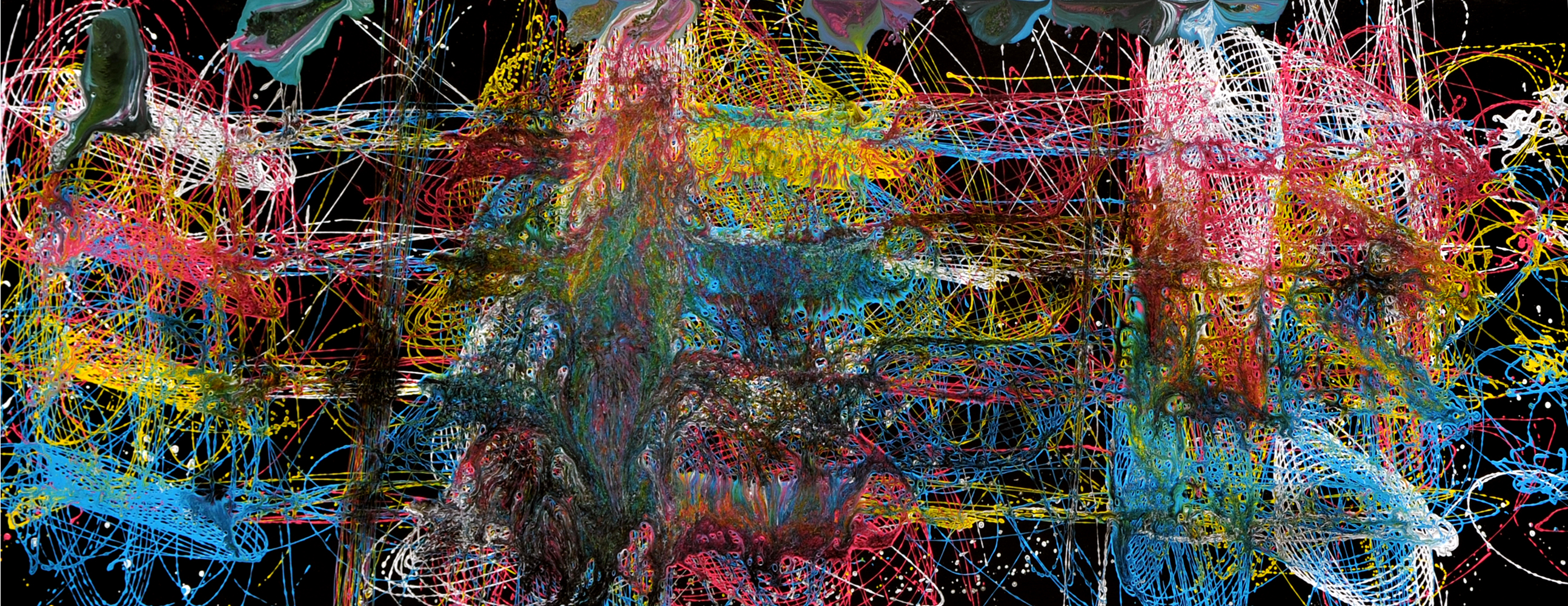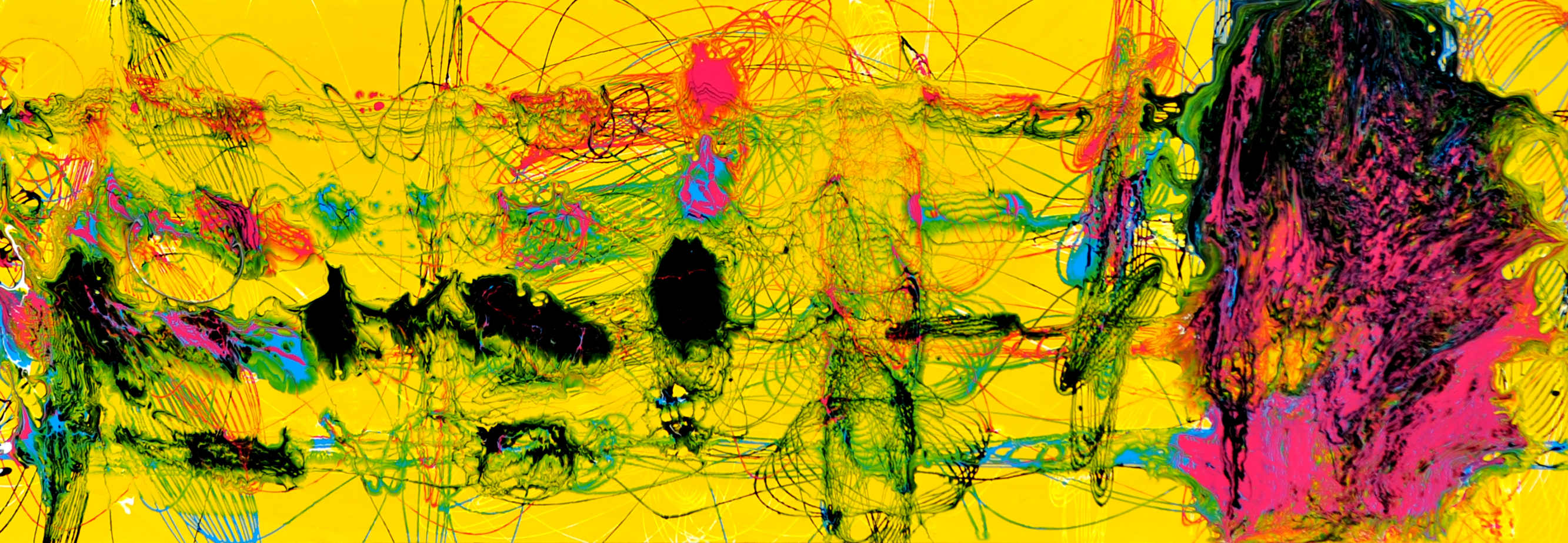|

 Jack the dripper- Harry Plotter. Jack the dripper- Harry Plotter.
Installationsansicht Galerie Altnöder, Salzburg.
2010
//
Jack the dripper – Harry Plotter.
Installation view
Altnöder Gallery, Salzburg.
2010

   
Jack the dripper/Harry Plotter
Nicht erschöpfend aufgezählte Grundbedingungen der Malerei:
a)
Die Mediengröße wird durch die Größendimensionen des Produktionsapparates bzw. Ateliers bestimmt.
b)
die Auswahl des Grundfarbsystems – potentiell können während des Prozesses alle nur erdenklichen Farben gemischt werden. ( am Ende das Grau)
c)
die totale Homogenität – aufgrund der Konstruktion der Apparatur und dem Ablauf der Herstellung kann jede Farbe und somit auch jede Form, potentiell an jedem Ort des Bildträgers zum Einsatz kommen.
d)
Die Beeinflussung des Systems ist nur bedingt von Außen möglich. (lineares Vor- und Zurückbewegen des Pendelschlittens)
e)
Der Herstellungsprozess gliedert sich in vier Durchgänge/Bildträger. (pro Durchgang werden die am Pendel linear angebrachten Farbkartuschen um eine Position versetzt)
f)
Der Herstellungsprozess wird meistens von 2 Personen in ewas beiläufiger Art und Weise durchgeführt. (sich gegenüberstehend und plaudernd den Pendelschlitten hin- und herschiebend)
g)
Das System ist den chaotischen Masse- und Reibungskräften der Bauteile des Apparates und den unvorhersehbaren Muskelbewegungen der arbeitenden Personen ausgesetzt.
h)
Die Dauer der Herstellung orientiert sich nach dem Gutdünken der arbeitenden Person und der zur Verfügung stehenden Farbmenge.
i)
Die malerischen Resultate sind als Emanationen des Systems anzusehen und MÜSSEN immer in Bezug auf ihre Herstellungsbedingungen präsentiert und kontextualisiert werden. Dem Betrachter/Besitzer steht es jedoch die Art und Weise der bildpolitischen „Setzung“ der oder den Tafel/n frei. (legen -lehnen- stellen-verdecken-stapeln), (sakrales Tafelbild – Tischplatte – Paravant – Boden- oder Deckengestaltung – Arbeitsunterlage – Wickeltisch – etc..)
///
Jack the dripper/Harry Plotter
painting as a medium – some conceptual basics:
a)
The size of the medium is determined by the apparatus’ dimension respectively by the dimension of the artist’s studio.
b)
The selection of a basic colour system – generally all colours imaginable can be mixed. (The colour grey in the end.)
c)
The total homogeneity – on grounds of the apparatus’ construction and the course of production any colour and therefore any form can be applied in any position on the painting’s subsurface.
d)
Outside of the system interference is only possible to a limited extent. (In-line sliding of the pendulum carriage back and forth.
e)
The process of production is divided into four runs/image carriers (before each painting cycle the colour cartridge inside the linear pendulum cover will be displaced by one position.
f)
Most of the times the process of production will be carried out by 2 persons in an incidental manner.
g)
The system is committed to irrepressible forces of inertia and friction stemming from constructional components of the apparatus and unpredictable muscular efforts of the person working.
h)
The duration of the process of production is geared to the action as the working person thinks best as well as to the
amount of paint available.
i)
The results of the painting process are to be seen as emanation of the system and MUST at all times be presented and contextualised with respect to the conditions of its production.
On the other hand, the viewer/holder of the painting/s is free to choose the modality
of their cultural/political “setting”. (under-against-above-behind-half hidden-fully wrapped-stacked), (sacred panel – desk top – room divider – floor or ceiling arrangement – work surface – diaper changing table – etc.)
 k k
200x80cm
Lack/Sperrholz
2010
//
k
200x80cm
enamel/plywood
2010
 m m
200x80cm
Lack/Holz
2010
//
m
200x80cm
enamel/plywood
2010
 c c
200x80cm
Lack/Sperrholz
2010
//
c
200x80cm
enamel/plywood
2010
 y y
200x80cm
Lack/Sperrholz
2010
//
y
200x80cm
enamel/plywood
2010
 w w
80x200cm
Lack/Sperrholz
2010
//
w
80x200cm
enamel/plywood
2010
|

 Jack the dripper- Harry Plotter.
Jack the dripper- Harry Plotter.




 k
k m
m c
c y
y w
w